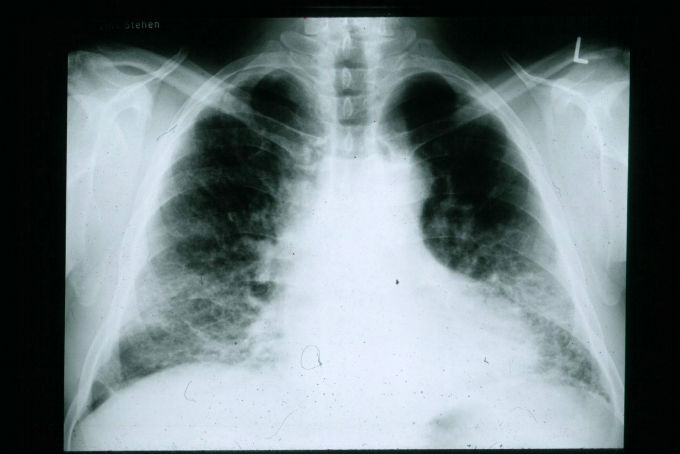by Lucia Mueller, President, PharmacyChecker.com | Jun 30, 2017 | Advocacy
 Amidst Washington’s vapid attempt at “solving” healthcare, Americans continue dealing with the everyday obstacles that come with prioritizing our families’ health, and all the while, prescription drug costs just keep rising. Minority communities are particularly at risk.
Amidst Washington’s vapid attempt at “solving” healthcare, Americans continue dealing with the everyday obstacles that come with prioritizing our families’ health, and all the while, prescription drug costs just keep rising. Minority communities are particularly at risk.
The crisis of rising drug costs expands beyond minority groups, but studies show that Hispanics are more likely to forgo filling a prescription due to cost than the population at large. Worse, as immigrants increasingly fear leaving their homes, undocumented immigrants will be less likely to get needed medications. Wherever you stand on the immigration issue, this trend is unacceptable and must be combatted by educating all people about lower cost drugs available abroad, but some people are getting this wrong…
In a recent op-ed written by Garfield Clunie and Richard Williams and published in Morning Consult, a well-meaning yet dangerous claim is made—that “if [Congress permits the importation of prescription medicines from other countries], the United States government will actually be promoting the use of counterfeit and unsafe medications.” This is simply false. (more…)
Tagged with: garfield clunie, minorities, Online Pharmacies, personal drug importation, richard williams
by Tod Cooperman, M.D., CEO, PharmacyChecker.com | Mar 31, 2016 | Cancer Drugs, Drug Prices
There has been a lot of news this week about the outrageously high cost of Xtandi, a drug for advanced prostate cancer. Although developed with funding from the U.S. National Institutes of Health (NIH), Xtandi (enzalutamide) is being sold to Americans at about four times the price at which it is sold in other countries. In January, a petition was sent to have the U.S. government step in and require that Xtandi be priced more fairly for Americans. More recently, several congresspeople and senators, including Bernie Sanders, reiterated this request with their own letter to the Secretary of Health and Human Services and the Director of the NIH.
According to the petition, the Japanese company licensed to sell Xtandi, Astellas Pharma Inc., and its U.S. marketing partner, Medivation Inc. charge an average wholesale price of $88.48 per 40 mg capsule in the U.S. However, in Japan the price is just $26.37, in Australia, it is $23.46, and just across the border in Canada the price is only $20.12.
If you only had to take a few capsules of Xtandi for a short time, this might not be such a big deal. But a standard dose of Xtandi is 4 capsules per day for months at a time. That’s 120 pills per month. So the cost of just a one-month supply of 120 pills at the average wholesale price is $10,617. That’s right, over $10,000 per month! If you must get Xtandi and you don’t have insurance which covers it, what are you to do?
First, if you have no insurance or poor insurance and a household income of $100,000 or less, you can apply to get Xtandi for free through Astellas, which may also offer other financial support.
If that doesn’t work for you, another less expensive option (short of travelling to another country) would be to order Xtandi from a verified international online pharmacy, which will send the medication to you from a licensed pharmacy in another country, such as Canada. Currently, several PharmacyChecker.com-verified online pharmacies sell Xtandi for about $41 per 40 mg capsule – about half the cost in the U.S. If you prefer to get your medication from a U.S. pharmacy, many pharmacies offer or accept discount cards which can bring the cost down a little, but only to about $75 per capsule.
It is ridiculous that American taxpayers helped develop this drug but are charged the most to get it. Hopefully, things will change.
Tagged with: Astellas, Cancer medication, Drug Prices, government, Online Pharmacies, prostate cancer, Xtandi
by Tod Cooperman, M.D., CEO, PharmacyChecker.com | Jan 14, 2016 | Drug Prices, New Drugs, Online Pharmacies
In the article “I.P.F., Not Aging, Could Be Causing Breathlessness” in the New York Times this week, columnist Jane Brody explains that the drug Esbriet (pirfenidone) can “slow the loss of lung function and significantly reduce deaths” from an incurable lung disease called idiopathic pulmonary fibrosis, or I.P.F.
The article notes that Esbriet was approved in the U.S. in 2014 and now 14,000 people have begun treatment, which costs $94,000 per year. The article also notes that the drug has been available for several years in other parts of the world (including Japan, India, Europe and Canada).
What the article does not mention is that this incredible drug can be purchased at just a fraction of the cost through many online pharmacies which dispense it from licensed pharmacies outside the U.S – where the cost is only about $2,000 per year, rather than $94,000 per year.
The standard dose of Esbriet is 801 mg per day – 3 capsules, each containing 267 mg of pirfenidone, according to the NIH website DailyMed. Outside the U.S., pirfenidone is sold as 200 mg capsules (so 4 capsules would provide a similar dose – 800 mg). In the U.S., the price of each 267 mg capsule (without any discount) comes out to about $85, while a 200 mg capsule from outside the U.S. costs about $1.50 (prices listed at http://www.pharmacychecker.com/generic/price-comparison/pirfenidone/200+mg/)
Why must Americans (and our government programs) pay 40 to 50 times more than to get this drug in the U.S. than from elsewhere?
Tagged with: Drug Prices, Esbriet, Idiopathic Pulmonary Fibrosis, international pharmacies, life-saving drugs, Online Pharmacies, Pirfenidone
 Amidst Washington’s vapid attempt at “solving” healthcare, Americans continue dealing with the everyday obstacles that come with prioritizing our families’ health, and all the while, prescription drug costs just keep rising. Minority communities are particularly at risk.
Amidst Washington’s vapid attempt at “solving” healthcare, Americans continue dealing with the everyday obstacles that come with prioritizing our families’ health, and all the while, prescription drug costs just keep rising. Minority communities are particularly at risk.



